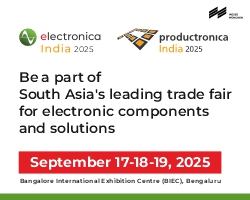The power metal-oxide-semiconductor field-effect transistor (MOSFET) market has witnessed a significant surge in demand across various industries, driven by the increasing need for efficient power management, energy conservation, and advanced electronic applications. The power MOSFET, known for its reliability, high-speed switching capabilities, and low power consumption, is becoming a core component in a broad range of industrial and consumer applications. From automotive systems and industrial machinery to consumer electronics and renewable energy systems, power MOSFETs are playing an increasingly pivotal role in the development of modern electronic systems.
The global power MOSFET market is forecasted to expand at a CAGR of 6.3% and thereby increase from a value of US$7.2 Bn in 2023 to US$11.1 Bn by the end of 2030.
Understanding Power MOSFET Technology
A Metal-Oxide-Semiconductor Field-Effect Transistor (MOSFET) is a type of transistor used for amplifying or switching electronic signals. The “power MOSFET” is a specialized type designed to handle higher currents and voltages than traditional MOSFETs. These devices operate efficiently in power control circuits, making them ideal for applications that require high-speed switching, low energy loss, and high reliability.
Power MOSFETs are classified into two main types: N-channel MOSFETs and P-channel MOSFETs, with N-channel variants generally offering better performance in terms of conductivity and efficiency. The demand for these devices has grown rapidly due to their ability to enhance the performance and efficiency of various power systems, including converters, regulators, inverters, and motor drives.
Industrial Applications Driving the Power MOSFET Market
The industrial sector is one of the key drivers of the power MOSFET market. With the growing emphasis on automation, energy efficiency, and the adoption of electric machinery, power MOSFETs are becoming indispensable components in many industrial systems.
1. Industrial Automation and Robotics
With the rise of Industry 4.0, industrial automation and robotics are taking the forefront in manufacturing and production facilities. Power MOSFETs play a crucial role in driving and controlling electric motors, sensors, and actuators used in robotic systems. These transistors help regulate power efficiently, allowing for more precise control over robotic arms, conveyors, and other machinery. The increasing demand for robotics in sectors such as automotive, electronics, and consumer goods manufacturing is directly boosting the demand for power MOSFETs.
2. Power Conversion Systems
According to Persistence Market Research, industrial power conversion systems, such as those used in uninterruptible power supplies (UPS), renewable energy inverters, and electric vehicle charging stations, rely heavily on power MOSFETs for efficient operation. These systems require highly efficient power switches to convert, regulate, and distribute electrical power, often at high voltages and currents. Power MOSFETs are crucial for minimizing energy loss during the conversion process, enhancing the efficiency and longevity of power supplies and renewable energy systems.
3. Motor Drives and Electric Vehicles (EVs)
In the growing electric vehicle market, power MOSFETs are vital for controlling the electric motor’s speed and torque. EV powertrains require efficient switching to handle high voltage and current demands, and power MOSFETs are often chosen for their low switching losses, high efficiency, and fast response times. Moreover, the adoption of electric motors in industrial equipment and machinery, such as conveyor belts and pumps, further increases the demand for power MOSFETs.
Consumer Applications and the Expanding Role of Power MOSFETs
The consumer electronics sector is also experiencing a surge in demand for power MOSFETs. From smartphones and laptops to home appliances and audio systems, the need for more efficient, faster, and compact power devices is becoming more critical. As consumer demand for high-performance, energy-efficient devices continues to rise, power MOSFETs are becoming essential in optimizing the performance of various electronics.
1. Consumer Electronics and Mobile Devices
In consumer electronics, such as smartphones, tablets, and laptops, power MOSFETs are integral components of the power management systems that ensure longer battery life and better energy efficiency. The increased focus on fast charging and low-power operation in these devices is a key factor driving the demand for power MOSFETs, as they help minimize power loss during charging cycles and ensure more efficient energy use.
2. Home Appliances
Modern home appliances, particularly those that are smart-enabled, are incorporating more advanced electronic components. Power MOSFETs are used in power supplies, voltage regulators, and motor controllers in products such as refrigerators, washing machines, air conditioners, and microwaves. As the demand for energy-efficient home appliances increases, manufacturers are turning to power MOSFETs to optimize their products’ energy consumption and improve their operational performance.
3. Audio and Visual Systems
In the entertainment sector, power MOSFETs are essential in audio and video equipment, such as amplifiers, sound systems, and televisions. These devices require high-efficiency power regulation to provide high-quality sound and image processing without overheating or excessive power loss. The growing consumer demand for high-definition audio and visual products is driving the need for better, more efficient power management, which can be achieved through the use of power MOSFETs.
The Impact of Energy Efficiency and Environmental Concerns
The growing focus on energy efficiency, sustainability, and environmental concerns is another significant factor propelling the power MOSFET market. As governments and organizations around the world work towards reducing carbon footprints and promoting energy-efficient solutions, power MOSFETs are becoming an essential component of sustainable energy systems.
1. Renewable Energy and Smart Grids
The global shift towards renewable energy sources, including solar, wind, and hydroelectric power, requires advanced power management technologies to efficiently convert and distribute energy. Power MOSFETs are essential in renewable energy systems, as they are used in inverters and converters to ensure the smooth integration of renewable energy into the grid. In smart grids, these components enable the efficient distribution and management of electricity, ensuring that power is used efficiently and waste is minimized.
2. Power Management in Electric Vehicles
As electric vehicles (EVs) continue to gain popularity, the demand for efficient power management systems in EVs is increasing. Power MOSFETs are essential for regulating the flow of energy from the battery to the motor and other vehicle systems. The growing adoption of EVs in response to environmental concerns is driving the demand for power MOSFETs in this sector. As automakers continue to innovate and develop more energy-efficient vehicles, the role of power MOSFETs will only become more pronounced.
Technological Advancements Driving Power MOSFET Growth
As technology continues to evolve, power MOSFETs are becoming increasingly sophisticated. Several advancements are contributing to the market growth, including:
1. Improvements in Switching Speed and Efficiency
The demand for faster switching speeds and improved efficiency in power MOSFETs has led to the development of new materials and manufacturing techniques. Wide-bandgap semiconductors such as silicon carbide (SiC) and gallium nitride (GaN) are being integrated into power MOSFETs, enabling higher voltage tolerance, faster switching speeds, and reduced power loss.
2. Integration with Other Power Components
Modern power MOSFETs are increasingly being integrated with other power management components, such as diodes and controllers, to create more compact, efficient, and cost-effective solutions. This trend is particularly beneficial for applications in automotive electronics, industrial machinery, and consumer electronics, where space and cost constraints are critical factors.
3. Miniaturization and Packaging Innovation
With the increasing demand for smaller, more efficient power solutions, MOSFET manufacturers are focusing on miniaturization and innovative packaging techniques. These developments enable power MOSFETs to fit into smaller devices and electronic systems while maintaining their high-performance characteristics. Miniaturized power MOSFETs are particularly important for portable consumer electronics and wearable technologies, where size and power efficiency are key considerations.
Regional Trends in the Power MOSFET Market
The power MOSFET market is experiencing strong growth across different regions, driven by varying factors in each region. In North America and Europe, the adoption of electric vehicles, renewable energy solutions, and advanced industrial automation systems is a key driver. Meanwhile, in Asia-Pacific, the demand for power MOSFETs is being fueled by the rapid growth of the electronics, automotive, and manufacturing industries.
China, Japan, and South Korea are some of the leading markets in Asia due to their strong electronics manufacturing sectors and government initiatives promoting energy efficiency and sustainable technology. Additionally, emerging economies in Latin America, the Middle East, and Africa are witnessing increasing adoption of power MOSFETs in industrial and consumer applications, further expanding the market.
Conclusion
The power MOSFET market is on an upward trajectory, with robust demand driven by advancements in technology, growing industrial automation, increasing consumer electronics consumption, and the push for energy efficiency. As the market continues to evolve, power MOSFETs will play an even more significant role in transforming a wide range of industries, from automotive to renewable energy and beyond. The future of the power MOSFET market looks bright, with continued innovation, miniaturization, and increased efficiency ensuring that these components will remain at the heart of modern electronics for years to come.












